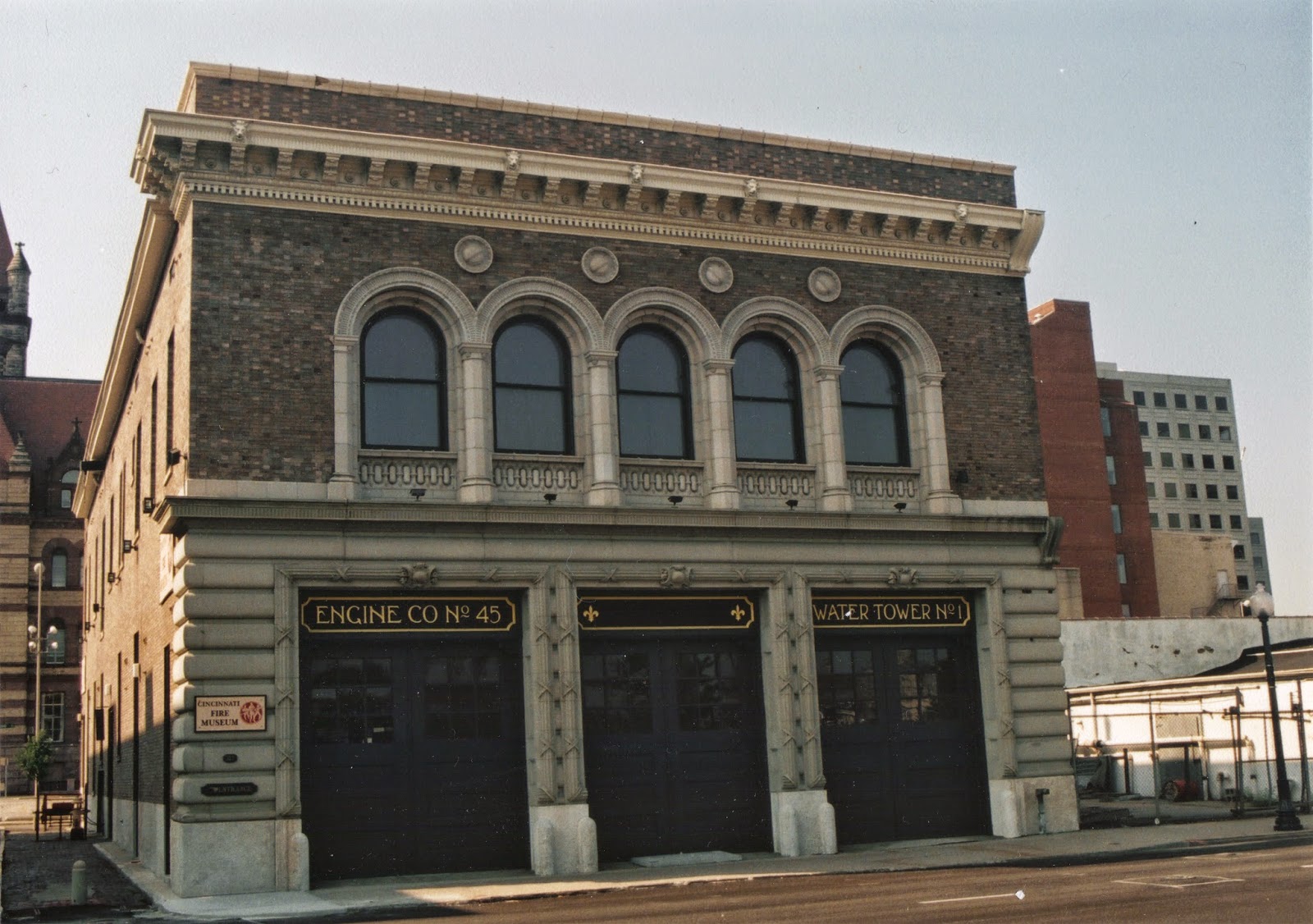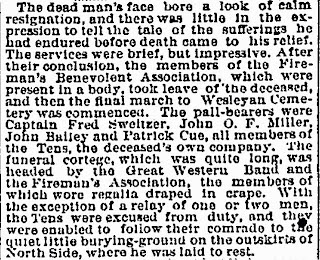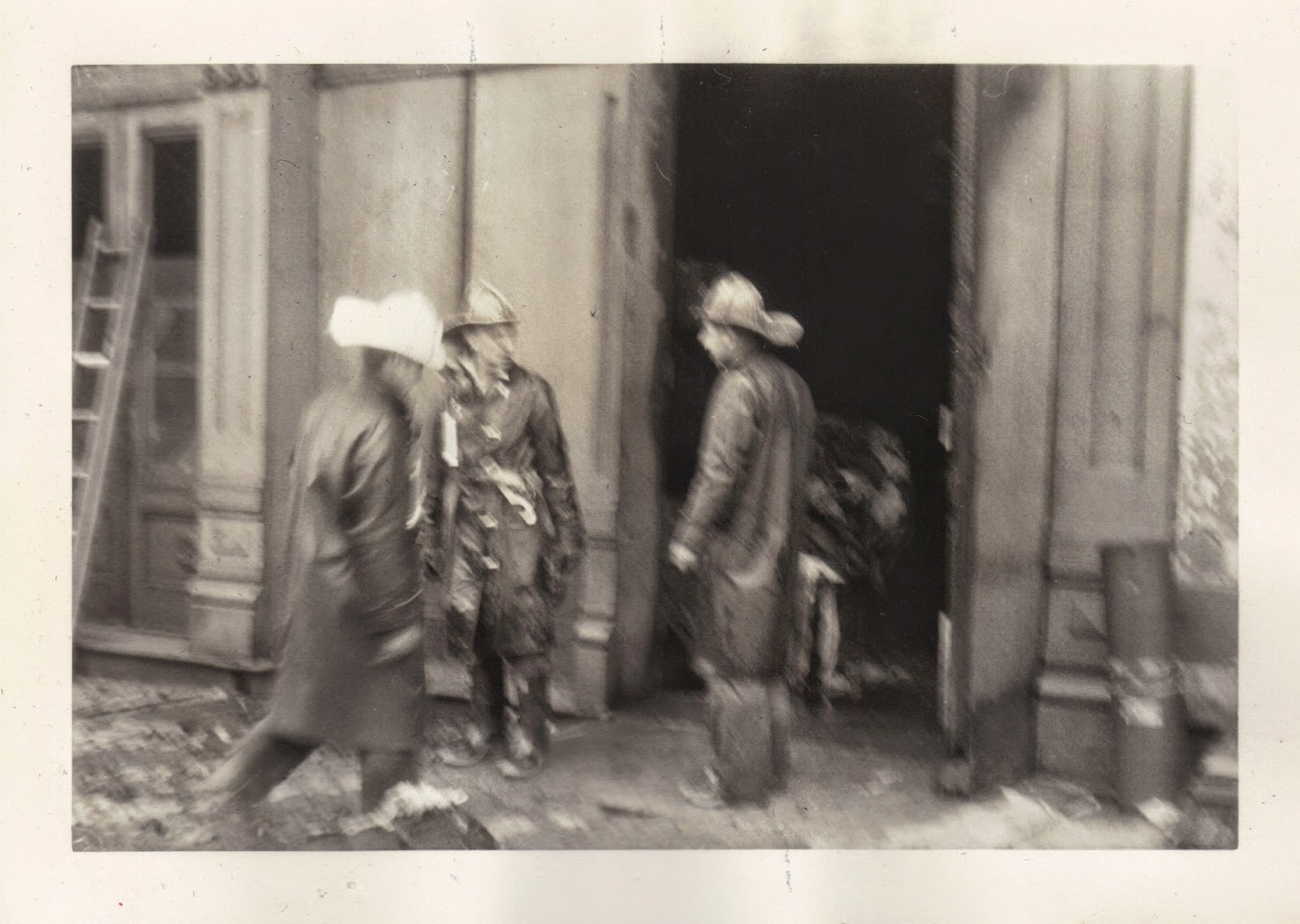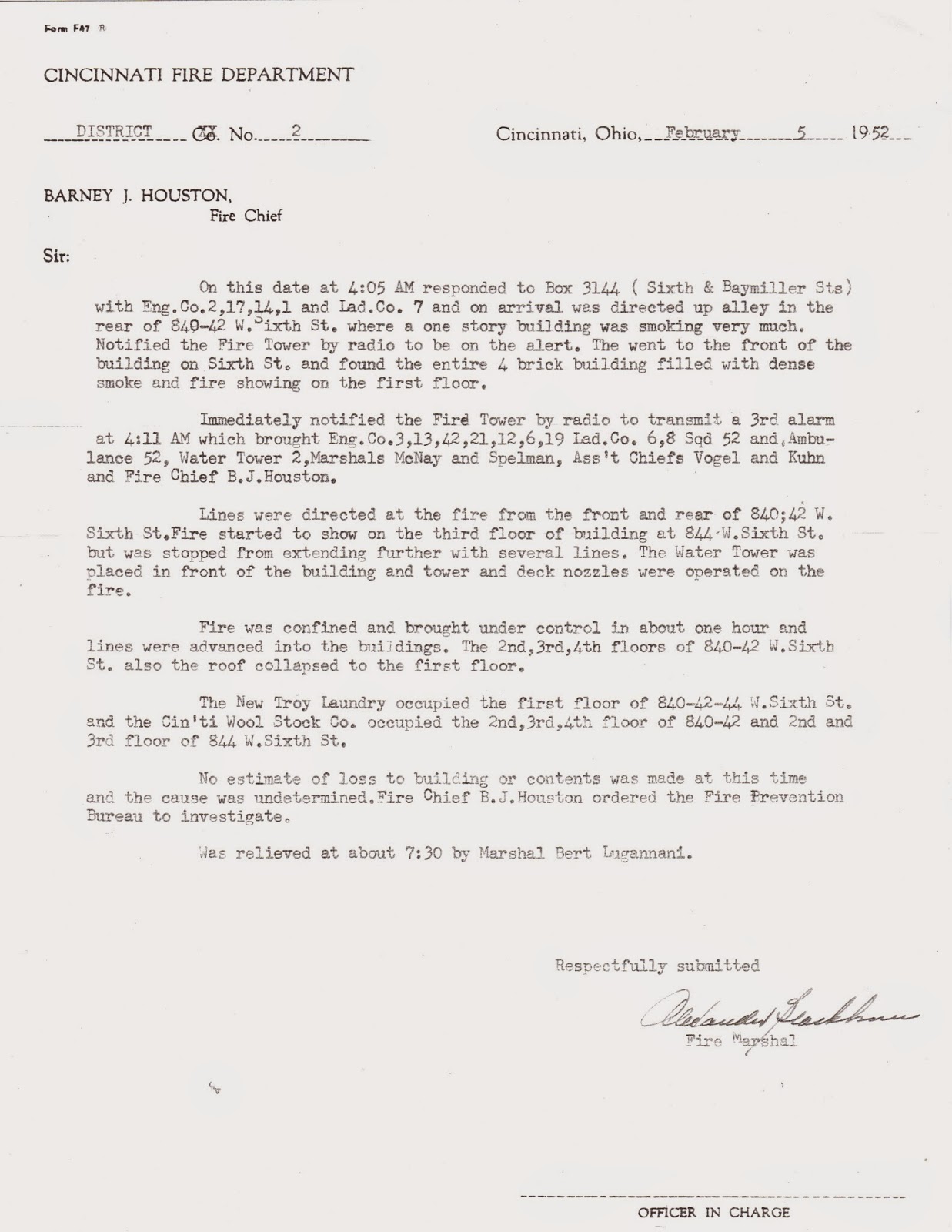Thanksgiving Tragedy - Billy Greve Killed - Newly Found LODD
The Cincinnati Enquirer
27 November 1903
26 November 1903, Night watchman John Myer was about to start his shift. He was expecting a quite night as the warehouse he worked in had been idle all day in observance of the Thanksgiving holiday. His expectations were dashed when he opened the door only to discover the building charged with smoke. He quickly rushed to the rear of the structure and found a working fire in the engine and boiler room. Bolting for the exit he gave the call of fire. George Frese, a passerby, heard the cry and pulled fire box 263 at 4:38p. The fire department arrived on scene within minutes and a second alarm was pulled. In all Engines 1, 2, 3, 4, 8, 9, 14, and 22 responded to the scene along with Hooks 1, 6, and 7.
Engine Co.10
Stelter Collection
The machine shop of Smith, Meyer & Schnier was situated on Front Street. At this end the brick building was 2.5 stories in height. In the rear the complex butted up to the river bank and was 1.5 stories high. Access to the building was made difficult by the other factories on either side as well as the river. The only point of attack open to the fire laddies was to be the Front Street entrance. The men worked efficiently as they brought their lines to play on the blaze. Crews from Engine 04 and Hooks 06 worked on the eastern side of the building. Engine 01 and Engine 22 made way to the second floor and Engine 10 accompanied Engine 02 in making an attack from the first floor. Several lines were in operation but the flames were still pushing toward the Front Street entrance driven by a steady wind off the river. The men in the building had taken their places among the many heavy machines inside. Hanging over the men working on the second floor was a massive mobile crane used to move machines around on the floor below.
Without warning the roof gave way. The great crane came smashing down onto the second floor which then collapsed onto the first. Firemen were scattered all around and on the building. The crew of Engine 01 was on a ladder in the front of the building, two men were thrown clear of the debris while two others were partly buried. Others jumped from windows or under machines after hearing the first rumbling of the structure as it failed. Most were struck by falling bricks and beams as they made efforts to escape the building.
Chief of Police Millikin was watching from outside. Upon witnessing the calamity he signaled for his patrol wagons to pull forward. Immediately the firemen on scene were joined by policemen bearing stretchers. The firemen of Engine 10 had been in the most unfortunate position. They had been fighting the fire directly under the collapse. Lieutenant Dennis Doherty managed to reach a doorway before being struck down. Doherty's roughnecks, Billy Greve and James Keegan, were not so lucky.
Injured firemen were rushed via patrol wagon to the City Hospital. As the wagons sped from the scene, citizens took notice and a rumor spread that a great many firefighters had been killed. A large crowd began to make its way to the scene. Policemen and Firefighters continued to pull men from the debris. Fire Chief Archibald with the help of Assistant Chiefs McAvoy and Hurley took accountability of their companies. James Keegan, Captain O'Neil, and Billy Greve were found to be the only members still missing. It was felt the men were under the main portion of the debris. The area was filled with choking smoke and hoses continued to play over the debris pile so as to protect the men that were still missing from otherwise certain death from the heat and fire that was still burning. James Keegan was located first. He had been pinned under heavy timbers and it took great effort to free him. His right leg had been fractured in two placed above the knee. Captain O'Neil then appeared, having managed to free himself from the debris and escape serious injury. Greve was now the lone missing firefighter.

The Cincinnati Enquirer
27 November 1903
James Connry of Hooks 01 was feeling his way over the debris pile about 25 feet into the front of the structure when he spotted Greve laying on his back, pinned at the neck and stomach under large beams. Flames were burning the beams very near his body and his expression made clear the agony he had suffered. He had suffocated under the beams, pinned in a position that left him unable to protect his face from the smoke and water that surrounded him. After hours of work with axes, saws, and crowbars the body was finally recovered.
A great many of the firemen working the scene that day experienced close calls. A.J.Carroll of Engine 06 had jumped under a heavy machine for cover. The machine shielded him from the beams that fell from above. Dick Rathkamp of Engine 01 was found hanging from the cornice of the building with flames licking all around him. Len Westcott reached him as his grip started to fail and helped him down a ladder. Fred Huesmann, pipeman of Engine 22, was trapped between a machine and the wall. His cloths began to catch fire as the men reached him. They managed to free him and pulled him out a nearby window just as the floor collapsed around him.
The Cincinnati Enquirer
27 November 1903
The fire left a lasting mark on all the men that were there to experience it. Some of the men would also suffer physically for years to come. James Keegan, who had been at Greve's side at the time of the collapse, was disabled by the fire and it was uncertain if he would ever serve the fire department again. Their officer, Lieutenant Dennis Doherty sustained a skull fracture and internal injuries but he was expected to recover. Bart Fanning of Hooks 06 fell and injured both his legs. Fanning would later die from an accumulation of injuries sustained while working as a firefighter.
Word of the tragedy continued to spread through the city as the members of Engine 10 slowly returned to quarters. The men had suffered the loss of their fellow firefighter and fiend Billy Greve and others of their company were now being treated in the hospital. As they turned onto 3rd Street and their firehouse came into view they had still more pain to witness and endure. Greve lived with his family across the street from the firehouse. His children never missed the chance to run along side the engine as it left quarters and they were always present to welcome their father home upon its return. When the engine neared the waiting children they could not see their father among the men on the engine. Firemen provided evasive answers when questioned. It was at that moment that Ella Greve, Billy's wife, burst from the doors of their apartment building. She was sobbing and grief stricken, having just learned the news from a friend. It was only then that the children realized their father had been lost.
Services for Greve were conducted at Saint Xavier Church on Sycamore on Monday December 01. The hose wagon of Engine 01 that had carried Greve to the scene of the fire on Thanksgiving now carried him to his final resting place in St Joseph's Cemetery.
It was later learned that Greve had been sleeping in the firehouse when the alarm came in. His Captain, Peter O'Neil had returned from servicing his hydrant and it was Greve's turn to ensure his assigned hydrant was free of water, such was the procedure in cold weather. Rather than wake Greve, the captain decided to take care of Greve's hydrant as well. This kept Greve in quarters and thus he was able to respond on the initial alarm where O'Neil was delayed in his arrival at the scene. Had Greve been awake and set out to service the hydrant he might not have arrived at the scene in time to find himself in the middle of the collapse.
The Enquirer noted that, "Greve gave up his life, but as long as the department exists his memory will be cherished."
The Following will be added to the Cincinnati Fire Department Roll of Honor in memory of our line of duty deaths:
Firefighter William Greve - Engine Co.10 - Killed 26 November 1903 - Box 263 at 621 to 627 West Front Street (Smith, Meyer, & Schnier) 2 Alarm Fire - Building Collapse/Suffocation
Cincinnati Fire Department
UC Birth & Death Index - Rare Books Archive



















































